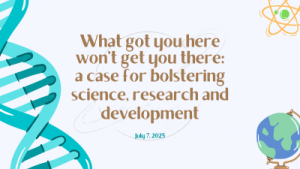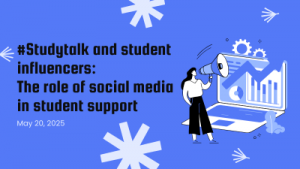We have recently completed a teaching and learning enhancement project focused on automated feedback. We viewed a core element of automated feedback as the use of GenAI for academic purposes. Our collaboration spanned three disciplines, Education, Medicine and Science.
One of our focal points was researching students’ competencies for using GenAI productively and drawing linkages to feedback literature, including feedback literacy research. Individual and focus group interviews were carried out with more than 40 students. The interviews focused upon how students use GenAI in their academic work; their views of the strengths and limitations of GenAI; and the competencies needed to use GenAI effectively. We also collected think aloud and screenshot data, supplemented by stimulated recall, which enabled us to understand students’ thinking processes when engaging with GenAI.
We identified four sets of competencies: interactional competence; evaluative competence; self-reliance; and continuous learning about GenAI. Interactional competence in the context of generative AI is mainly focused on prompt engineering, asking purposeful questions and following-up through dialogic interaction; evaluative competence involves verification, evaluation and critical thinking about outputs produced by GenAI; self-reliance involves ownership and tackling potential over-reliance on GenAI; and continuous learning about GenAI includes technical GenAI expertise, understanding the array of GenAI tools available and enhanced use of GenAI over time.
How do these competencies relate to feedback and feedback literacy? Interactional competence resonates with feedback seeking and dialogic feedback: the ability to engage in productive interactions with human and non-human sources. Evaluative competence relates to self-assessment, the application of criteria and the making judgments component of feedback literacy. Self-reliance links to a core purpose of feedback being to enhance student self-regulation, including goal-setting, informed self-assessment and using emotions productively. Continuous learning about GenAI resonates with improvement mentalities, reflection and growth mindsets for lifelong learning. The essence of feedback literacy is not just action but taking deliberative action. In other words, using feedback information of different forms in careful, considered reflective ways, rather than just following advice of a bot, teacher or peer reviewer in a perfunctory way. These strands of thought are summarized in Table 1 below.
Table 1. Interplay between GenAI competencies and feedback principles
| Student competencies for GenAI use | Selected feedback principles |
| Interactional competence | Feedback seeking Feedback dialogue |
| Evaluative competence | Applying criteria Making judgments |
| Self-reliance | Informed self-assessment Using emotions productively |
| Continuous learning about GenAI | Development of digital feedback literacy Reflections for ongoing improvement |
A fundamental issue becomes how teachers can scaffold the development of students’ competencies for GenAI and the related digital feedback literacies. These digital feedback literacies might be defined as the capacities to interact with GenAI and other digital sources, interpret and critically evaluate outputs and use them deliberatively. Implications for practice in the four dimensions are sketched below.
Interactional competence is developed through asking questions and extended interaction. It is probably fair to say that education is sometimes rather too focused on teachers asking questions and students answering them. The ability to ask purposeful questions and then continue dialogue as necessary is a crucial skill that could be integrated within GenAI pedagogies. In the context of a disciplinary issue, students and teachers could work together in preparing and enhancing prompts to put to GenAI, interpret GenAI outputs and then plan together what follow-up issues to raise.
Evaluative competence is developed through critically analyzing GenAI in the context of the discipline, including the modelling of how to analyze GenAI outputs and how to integrate them within ongoing assignment work. Peer- and self-assessment are usually considered to be major avenues for student development of evaluative competence and can be extended to GenAI use. In fact, peer collaboration in relation to GenAI is a particularly useful strategy spanning all four dimensions of our framework.
Self-reliance involves not being overly dependent on GenAI and is probably mainly in the hands of students. Thoughtful assessment design is one way in which teachers can promote student ownership of their work and circumvent over-reliance on GenAI. Students arguably respond well to authentic assessments that engage them, their aspirations and their future world, including the workplace. Interactive oral assessments, including podcasts, simulations and vlogs, merit further consideration as assessment designs relatively secure against over-reliance on GenAI.
Continuous learning about GenAI could be stimulated through various means. These include the power of demonstration: analyzing expert use of GenAI within a disciplinary context is a potentially rich experience for students. A key principle guiding continuous learning about GenAI lies in partnership approaches drawing on distributed expertise.
Finally, our project gives rise to avenues for further research at the interface of assessment, feedback and GenAI. What kinds of assessment designs promote students’ competencies in using GenAI? What are the respective benefits of human versus non-human sources of feedback? How do students enhance their competencies in using GenAI?



